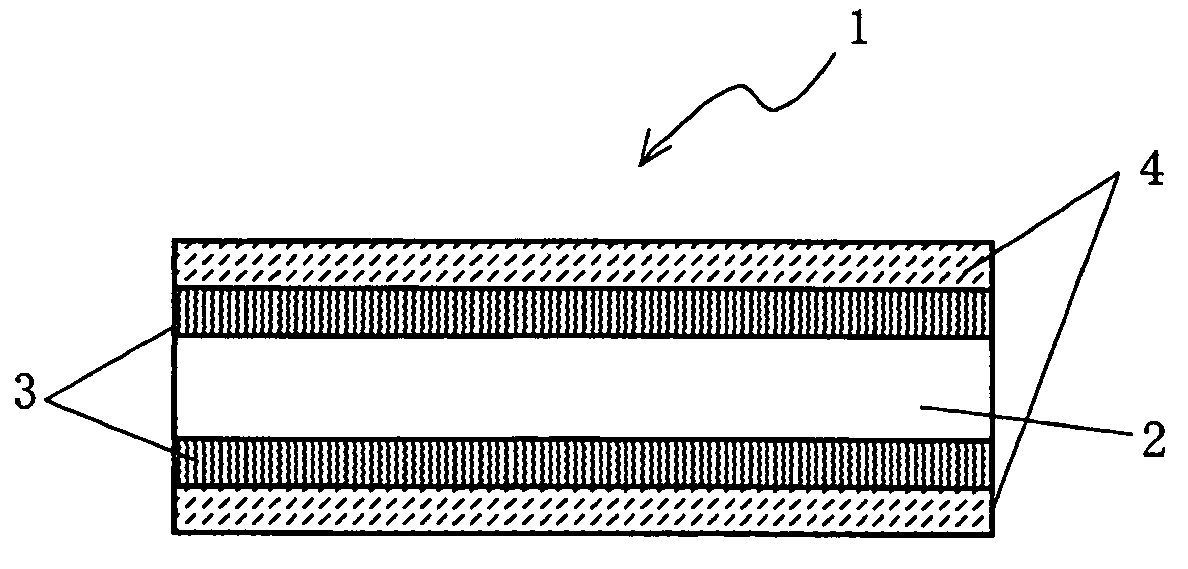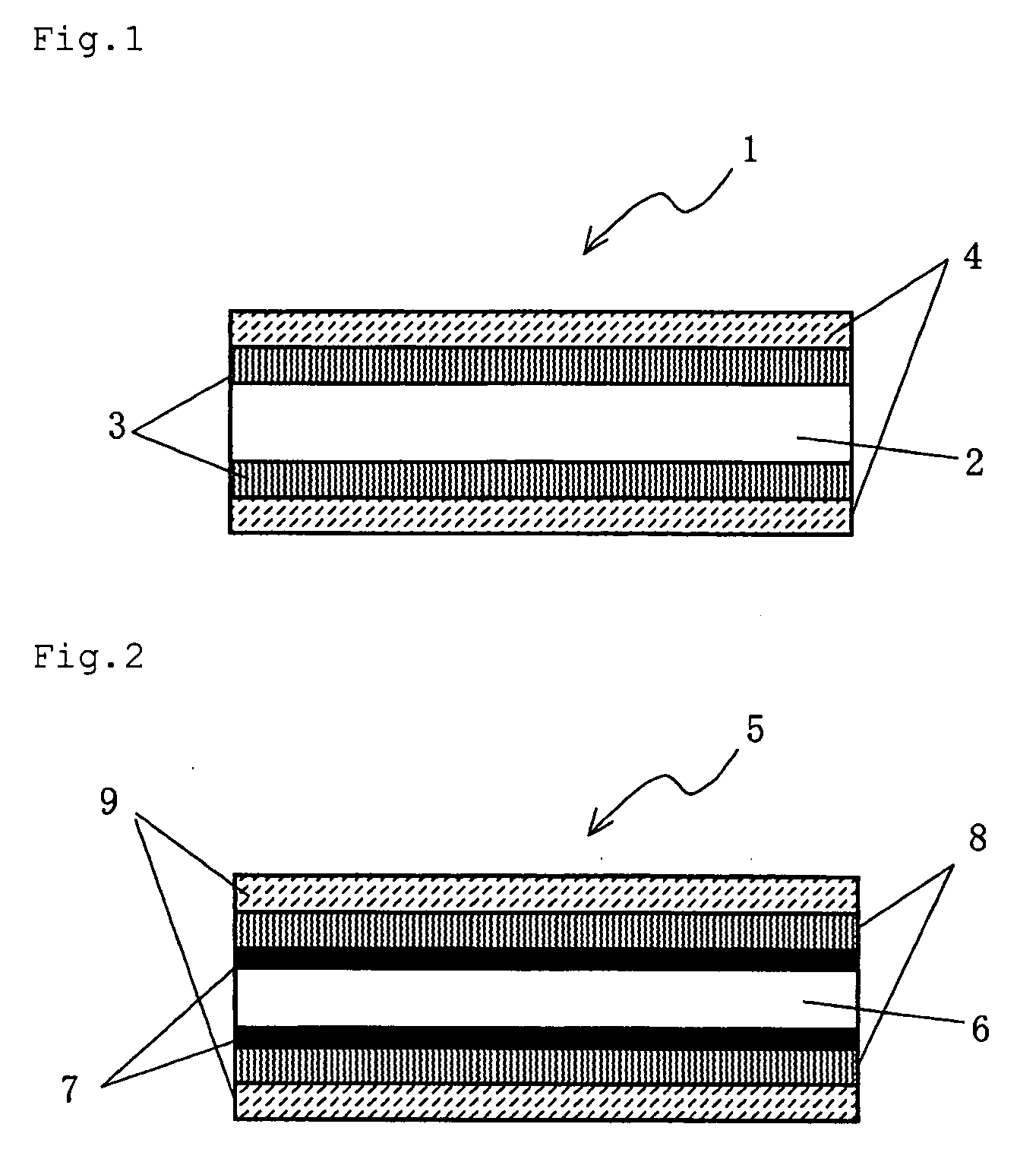Shrink Film
a film and film technology, applied in the field of shrink films, can solve the problems of poor workability, poor handling, dimensional stability, etc., and achieve the effects of beautiful finish, low specific gravity, and high shrinkag
- Summary
- Abstract
- Description
- Claims
- Application Information
AI Technical Summary
Benefits of technology
Problems solved by technology
Method used
Image
Examples
example 1
[0126]A polyolefin resin used for the core layer was 100 percent by weight of a metallocene-catalyzed polypropylene (propylene / ethylene copolymer) (“WINTEC WFX6” supplied by Japan Polypropylene Corporation). A resin used for the intermediate layer was a material mixture of 67 percent by weight of an LDPE (“Sumikathene L405” supplied by Sumitomo Chemical Co., Ltd.) and 33 percent by weight of an EGMA (“Bondfast E” supplied by Sumitomo Chemical Co., Ltd., having a GMA content of 12%). The GMA content in the entire material mixture was 4 percent by weight. A polyester resin used for the surface layer was 100 percent by weight of a CHDM-copoly-PET (“EMBRACE 21214” supplied by Eastman Chemical Company).
[0127]Melting and extrusion was conducted using three extruders. Specifically, the material resins for the core layer, intermediate layer, and surface layer were fed to the three extruders, respectively; allowed to converge using a converging block so that the resin for the intermediate la...
examples 2 to 36
[0130]A series of unoriented films (300 μm thick) and a series of shrink films each having a total thickness of 40 μm were prepared by the procedure of Example 1, except for varying conditions or parameters such as types and amounts (ratios) of material resins for the respective film layers, the ratio in thickness of film layers, and the GMA content of the intermediate layer, as in Tables 1 to 4.
[0131]The prepared unoriented films and shrink films had good shrinkability, storage stability, compressive strength, interlayer strength, and transparency as in Tables 2 to 4. Additionally, the shrink films were subjected to shrinking processes using a hot-air tunnel and a steam tunnel, respectively, to give labeled containers, and the labeled containers showed good finish suitability.
examples 37 to 40
[0138]A series of unoriented films (300 μm thick) and a series of shrink films each having a total thickness of 40 μm were prepared by the procedure of Example 18, except for varying the ratio of material resins for the core layer as in Table 6.
[0139]The prepared unoriented films and shrink films had good shrink properties, storage stability, compressive strength, interlayer strength, and transparency, as in Table 6. Additionally, the shrink films were subjected to shrinking processes using a hot-air tunnel and a steam tunnel, respectively, to give labeled containers, and the labeled containers showed good finish suitability.
TABLE 1List of Used ResinsSurface layerPolyester resinExamples 1-30 and 37-40,“EMBRACE 21214” (CHDM-copoly PET) from Eastman Chemical CompanyComparativeExamplesExamples 31-36“DIANITE KF550” (modified PET) from Mitsubishi Rayon Co., Ltd.Intermediate layerEGMA resinExamples“Bondfast E” (GMA content of 12%) from Sumitomo Chemical Co., Ltd.Polyethylene resinExamples...
PUM
| Property | Measurement | Unit |
|---|---|---|
| temperatures | aaaaa | aaaaa |
| melt flow rate | aaaaa | aaaaa |
| melt flow rate | aaaaa | aaaaa |
Abstract
Description
Claims
Application Information
 Login to View More
Login to View More - R&D
- Intellectual Property
- Life Sciences
- Materials
- Tech Scout
- Unparalleled Data Quality
- Higher Quality Content
- 60% Fewer Hallucinations
Browse by: Latest US Patents, China's latest patents, Technical Efficacy Thesaurus, Application Domain, Technology Topic, Popular Technical Reports.
© 2025 PatSnap. All rights reserved.Legal|Privacy policy|Modern Slavery Act Transparency Statement|Sitemap|About US| Contact US: help@patsnap.com


